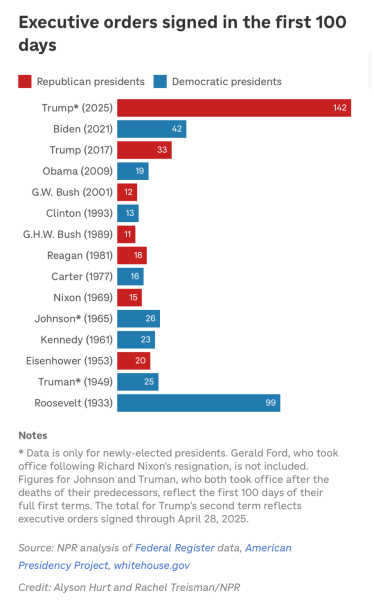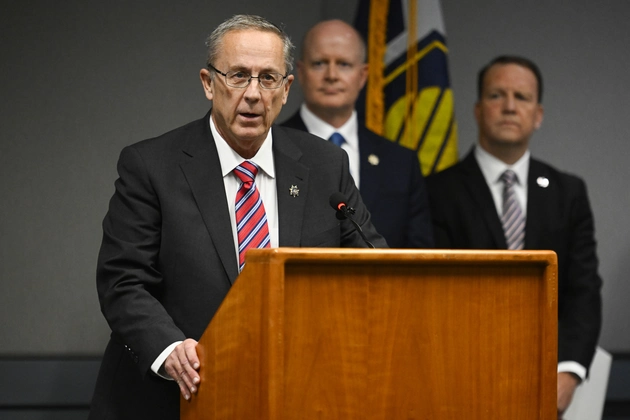It has already been 100 days since President Donald Trump took office. In his first 100 days of his second term, he has pursued his political agenda through a surge of executive orders and legislative actions.
Domestically, he has focused on immigration reform by implementing strict deportation policies (which resulted in American citizens being deported in El Salvador), and imposing high tariffs on foreign goods, which have led to an unpredictable market and higher prices for you, the consumer. His administration has also cut federal spending and reduced the federal workforce.

Regarding his international policies, Trump has strained U.S. relations with some of our key trading partners like China, Canada, and Mexico, leading to economic tensions. And to add to that, his withdrawal from global climate agreements has provoked criticism from environmental groups and international allies.
President Trump’s second term so far has been marked by more extreme policies and actions and bypassing our government systems. By the first 100 days of his first term, he signed 30 executive orders into law, including “Protecting the Nation from Foreign Terrorist Entry into the United States,” often referred to as the “Muslim ban”, while by the first 100 days of his second term, he has signed over 140 executive orders into law, including an order that allowed TikTok to continue operating in the U.S., cutting federal DEI (Diversity Equity and Inclusion) programs, and withdrawing from the World Health Organization. Since his inauguration, Trump has rescinded 78 executive orders that former President Joe Biden signed.
According to the American Presidency Project, most of Trump’s executive orders fall into several main categories: shrinking the federal government, foreign policy and defense, immigration and border security, energy and natural resources, and tariffs. Several of these executive orders – including those freezing foreign aid and banning transgender troops from military service – are temporarily blocked by courts as lawsuits play out. The Supreme Court will hear arguments this month about his order seeking to revoke birthright citizenship.
Many of the Trump administration’s actions have been challenged in court, particularly related to its suppression of immigration and efforts to shrink the federal workforce. These actions have strongly polarized opinions within the U.S. and drawn mixed reactions globally, which perfectly mirrors the controversial nature of his presidency. There have been over 200 lawsuits against the actions of the Trump administration, many of which are in limbo as rulings and appeals play out, making it difficult to supply a definitive case count.
Trump’s approval rating was lowest in an April 25 poll from The Washington Post, ABC News and Ipsos, giving him a 39% favorability rating. That’s down six percentage points from a similar survey released mid-February.







